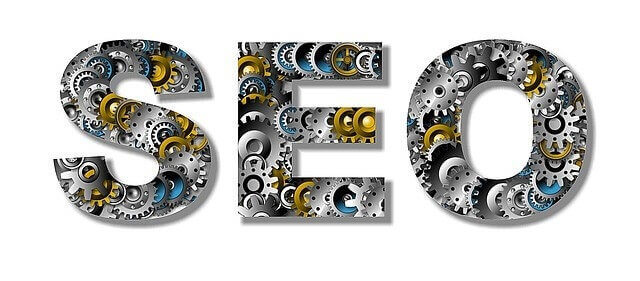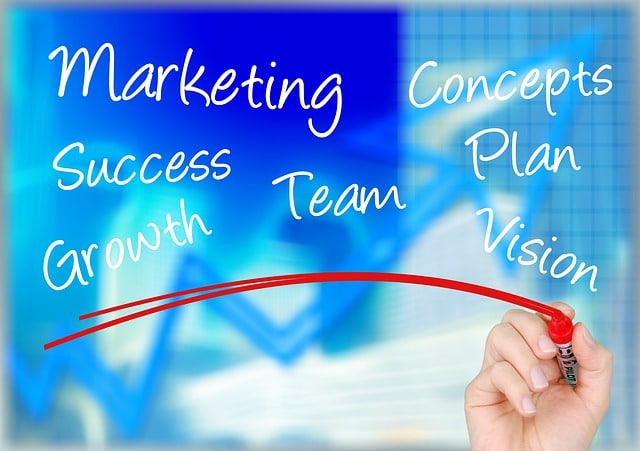SHARE
What is Inbound Marketing?
-1.png)
Seeing as the business world has become very e-commerce based in the past 10 years, inbound marketing is becoming an effective and important aspect of marketing.
So, What is Inbound Marketing?
Inbound marketing helps promote products and services of a company or organization through blogs, podcasts, e-newsletters, videos, search engine optimization, and social media. However inbound marketing isn’t about trying to fight for visitors attention, it’s about drawing them in with natural marketing.
73% of people use Facebook for their business, making it easier for customers and visitors to get a glimpse of what they’re all about without the constant push of traditional marketing methods.
On the other hand, 80% of people ignore Google's paid ads, further supporting the idea that people no longer want to be pushed towards a purchase but have some agency in finding it for themselves.
Inbound marketing is proven to create 3 times more leads than the usual marketing strategies do.
Inbound marketing is all about enticing strangers, bringing them to a website, and making them into customers. So learning the tips and tricks of how to use inbound marketing to your advantage could be an easy New Year's resolution for all businesses.
Hubspot (inbound marketing software) believes the best way to entice customers to your business is to:
1. Attract
2. Convert
3. Close
4. Delight
Blogs and Keywords are the tools to help you do this.
And on't forget you need to track how all these things are going. If you're having trouble with this, let Tangible Words know, and we can discuss with you software that can track it for you!
Table of Contents
Sales Reps Won’t Call Your Inbound Leads?
Inbound Marketing Tactics to Get More Customers with Less Work
5 Reasons Why Inbound Marketing Works
A Beginner’s Guide to Inbound Marketing:
If that explanation of inbound marketing still had a few too many technical terms for you, let's break it down even further.
Old-school marketing and sales is being replaced with an equally effective method that serves people in a more meaningful way.
We all know when we’re being sold to, and it doesn’t feel good; it can be obnoxious and invasive.
Instead, Inbound Marketing is customer-centric. That means the customer gets to decide when they want to be sold to and when they want to stay away from a sales person. If a customer is out there searching for an answer to a problem, inbound marketing helps them find options, and ultimately the right solution, faster. Even better, when they get to the webpage where they can find their solution, they will recognize themselves in the examples and be given hope that their problems are solvable.
At the same time, inbound marketing is just as great for the company as it is for the customer. (And by the way, selling drives our economy and creates companies who provide jobs - so don’t be hating on sales people. Sales is good for everyone - but we need inbound marketing to get rid of the bad-fit-buyer’s-remorse sales that happened before we had inbound.)
With inbound marketing, the company doing the selling gets to take the power back just like the customer does, creating a true win-win scenario. Whereas, before inbound, companies felt they had to sell to everyone to hit quotas, inbound marketing helps each company better articulate what it is they are offering, and connect with best-fit customers. Inbound helps sellers avoid alienating their prospects who do not properly understand the opportunity. Inbound also helps sellers avoid unnecessarily bringing people along who would never be interested in what they sell.
Inbound Marketing Affects How You Buy Online
Inbound marketing is important to understand, because it’s also how you buy things online, and it allows for a process where you feel satisfied every step of the way. You search for information, exactly the right product for your particular needs, and you choose to buy from companies that respect your needs and your time.
Essentially, inbound marketing makes a pleasant buying experience possible, by making sure you get what you want, without using old-school bridges-burned sales tactics.
No one likes a telemarketer calling them, or a door-to-door salesperson knocking on their door interrupting dinner: it’s often seen as intrusive and often means customers are being sold on something they might not even be interested in. If that old-school way of marketing is likely what you think of when you hear the word “sales”, you have been experiencing outbound marketing - not inbound marketing.
How Inbound Marketing Was Created
Inbound marketing is a strategy to sell online, using technology, relationships, and common sense. Inbound is a fairly new term, coined in 2006 by Brian Halligan, CEO and co-creator of HubSpot.
Inbound marketing principles centre around the customer at all points through their journey from when they first discover a problem, to seeking out a product or service as a solution, through to their purchase of that product or service, and continuing their relationship with that company as a delighted customer.
Essentially, inbound marketing asks: what can I deliver to best help a prospect or customer as soon as they ask for it?
With the inbound method, blog posts are created to address specific problems people may have, and then they’re shared with the target audience on websites and on social media platforms. Companies that use inbound marketing no longer blast sales messages to the masses. Instead, they carefully determine who their customers are, find out how to help them, thus providing value. AND they ask those people to ‘opt in’ to lists that give the customer valuable information - rather than forcing on those prospects content they do not want to receive.
There’s an active research process that a person goes through leading up to a purchase. Inbound marketers call this the buyer’s journey, and they create a buyer persona to define, understand and support their customer at every stage.
A persona is a detailed description of their ideal client, including the problems and challenges they are struggling with at every stage of the journey. In addition, the persona defines how to communicate with the target audience on a personalized level, online.
Inbound Marketing Tech Tools
Inbound marketers use technology to help them better serve people on the internet. For example, HubSpot’s Marketing Pro software keeps track of where customers come from, how often they’ve visited a website, and what conversations have occurred between the customer and the company.
With the client’s permission, all of this information is tracked so that the marketer can better help the customer, eliminating any redundant conversations, and making sure that communications sent to those customers contain information that is relevant specifically to them. Inbound marketing helps a company more quickly serve the prospect or customer by better understanding them.
Don’t you hate it when you call a company and have to re-explain who you are and what your problem is to one person, and then again to the next you get passed off to? Inbound can prevent that by keeping the entire team informed about each customer. And that information is more than just the customer’s name (that part’s child’s play); instead, all the communication that transpired between a company and a customer is logged in one place, which everyone can access using inbound software.
So how do you use inbound to better connect company to customer and vice  versa in the first instance? Search engine optimization, or SEO, is used to make sure that people find the helpful information that was created to serve them. A lot of time and care is put into crafting content that contains certain words or phrases that a customer is likely to search for online.
versa in the first instance? Search engine optimization, or SEO, is used to make sure that people find the helpful information that was created to serve them. A lot of time and care is put into crafting content that contains certain words or phrases that a customer is likely to search for online.
Then, Google’s Pillar Topic SEO strategy is used. You see, all blog articles and pages on a website have to be interlinked to each other to show search engines what a website is about, and how it might be of value for searchers. In order for a company to best serve a customer, it has to be easy for that customer to find the website. By doing this linking, a blog post or web page is likely to show up on the first page of search results.
For example, if someone is selling virus protection software, an inbound marketing strategy would incorporate SEO terms like:
- “virus scanning”,
- “how to protect my computer from viruses”, or even
- “is virus protection software worth the money?”
For each of these terms, the company selling the software would write helpful content to provide advice, information, or how-tos on the subject. And each piece of content would also be linked to the company’s larger site as a whole, which helps it show up on search engines. The people using the SEO terms to search for information can now find the article, AND get answers to their questions. In turn, that builds customer trust in the company that’s providing the answers - it’s a win-win, feel-good, convenient experience for both customer and company.
Meet People Where They Are
Of course marketers are using technology to their advantage, optimizing search engine results, customizing content, and ensuring that every interaction is tracked. But the one thing that inbound marketers never forget is that there are people behind every search and every minute spent online. Ultimately, technology is just a tool to reach individual humans.
The internet has changed how we buy things and the digital era made inbound marketing possible. Inbound marketing, however, understands the people behind the searches and emails and meets them exactly where they are, in order to authentically serve their needs.
It’s All About Relationships at the End of the Day
All of the strategy and software in inbound marketing is really just a way to create one-on-one relationships. Despite all of the advancements in technology, deep down we all still crave personalized interaction. We carry this into where we spend our money as well. We want to feel like we know the company we are doing business with, and we’re more likely to buy if we, as the customer, feel understood and taken care of.
Inbound marketing creates content to help the prospect or customer. It’s about seeing things from their perspective, understanding what they really need, and empathizing with their struggles, pain points, and how best to solve a problem. Understanding a customer on this level is what sets a company apart as being human, helpful, and truly caring - and that’s a brand that people will want to do business with.
Looking to Learn More About Inbound Marketing?

With this free checklist, you will be given a new framework for campaigns that solves all of these common marketing problems.
Topics
- Content Creation (297)
- Growth-Driven Design Websites (167)
- Inbound Marketing (145)
- Sales Growth (133)
- Tangible Words (111)
- Search Engine Optimization (85)
- Social Media Marketing (83)
- Hubspot (76)
- Blogging for Business (75)
- Economic Development (64)
- Events & Training (60)
- Company Growth Podcast (49)
- Manufacturing (47)
- Tourism (46)
- Email Marketing (42)
- Case Stories (40)
- Testimonials & Client Feedback (36)
- Education and SaaS (23)
- Google (21)
- Careers (19)
- Inbound Marketing Agency (19)
- Cool Companies (18)
- FAQ (16)
- Alysha Dominico (13)
- Associations (7)
- Food and Beverage (7)
TW Blog Sign-Up
Learn more about how to grow your business and improve your sales team process.






